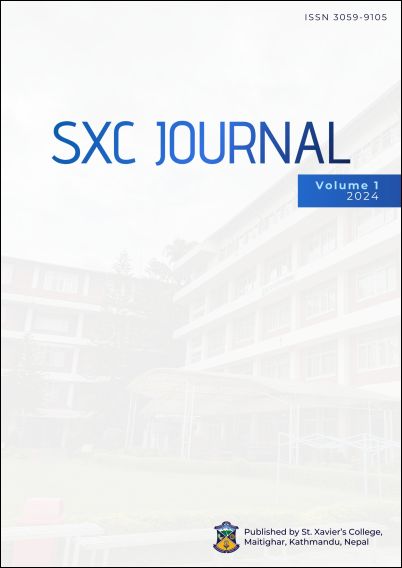Antimicrobial Activity of Commercial Essential Oils Available in the Market of Kathmandu
DOI:
https://doi.org/10.3126/sxcj.v1i1.70877Keywords:
Essential oils, antimicrobial activity, minimum inhibitory conAbstract
Given the increasing global apprehension surrounding antibiotic resistance, there has been growing interest in exploring natural compounds, specifically essential oils, as potential substitutes for combating microbial pathogens. This research work aimed to evaluate the antimicrobial activity exhibited by commercial essential oils and by diluting them with the carrier oils at equal concentration. The screening of antimicrobial activity was conducted using the agar well diffusion method with eight essential oils. Using the broth dilution method, the antibacterial activity of eight commonly used essential oils: lavender, tea tree, eucalyptus, peppermint, thyme, citrus, rosemary, and cinnamon were assessed. Both Gram-positive and Gram-negative species were selected for antimicrobial activity. The minimum inhibitory concentration (MIC) was determined by the broth dilution method. Following MIC determination, a sub-culture was performed on nutrient agar plates to ascertain the minimum bactericidal concentration (MBC). All the antibiotics used in the study demonstrated sensitivity when subjected to the antibiotic susceptibility test. Thyme, cinnamon and peppermint strongly inhibited the growth of S. epidermidis 46 mm, 30mm, and 34 mm respectively. Findings revealed distinct variations in the MIC values among the different essential oils and bacteria tested. Thyme and tea tree oils exhibited the broadest antibacterial spectrum, inhibiting both Gram-positive and Gram-negative bacteria at relatively low concentrations. Thyme (15.625 μl/ml) and tea tree (31.25 μl/ml) oil demonstrated promising activity against Gram-positive pathogen, while tea tree oil (15.625 μl/ml) displayed better efficacy against Gram-negative bacteria. A significant outcome was observed when the essential oils were diluted with carrier oils, indicating promising results in terms of antibacterial activity. These findings highlight the potential of essential oils, particularly thyme and tea tree oils, as effective natural antimicrobial agents.
Downloads
Downloads
Published
How to Cite
Issue
Section
License
Copyright (c) 2024 The Author(s)

This work is licensed under a Creative Commons Attribution 4.0 International License.
This license enables reusers to distribute, remix, adapt, and build upon the material in any medium or format, so long as attribution is given to the creator. The license allows for commercial use.




